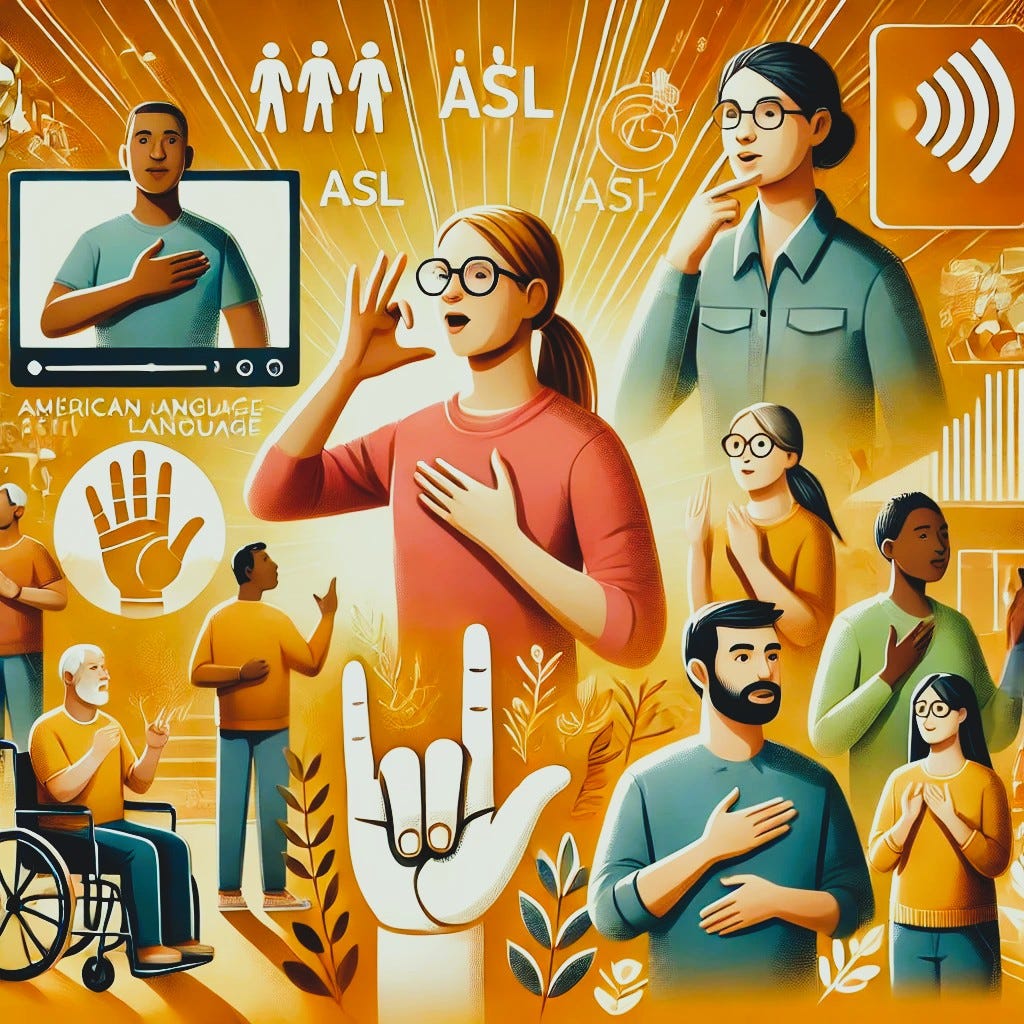Deaf awareness is about recognizing the diverse experiences of people who are deaf, hard of hearing, deafblind, deafdisabled, and late-deafened. While many deaf individuals share certain common experiences, the community itself is highly varied. Some identify with Deaf culture and use sign language as their primary mode of communication, while others do not. Factors such as communication preferences, cultural backgrounds, and additional disabilities all shape how deaf individuals interact with the world around them.
Defining “Deaf”
The term deaf is often used as an umbrella term to encompass a range of identities, including deaf, deafblind, deafdisabled, hard of hearing, late-deafened, and others. The National Deaf Center (NDC) adopts this inclusive approach while acknowledging that identity is fluid and can evolve over time. However, within the Deaf community, terms like “hearing impaired” are generally discouraged because they imply that being deaf is a deficiency rather than a unique way of experiencing the world.
American Sign Language: A Complex and Distinct Language
Sign languages are full, natural languages with their own unique grammar, vocabulary, and dialects. Contrary to popular belief, there is no universal sign language—different countries and regions have their own.
In the United States, American Sign Language (ASL) is the most commonly used sign language, but it is not the only one. Other variations include:
• Black American Sign Language (BASL) – Developed within historically Black deaf communities.
• Plains Indian Sign Language (PISL) – A sign system historically used by Indigenous tribes.
According to the National Association of the Deaf (NAD), ASL is more than just a translation of English; it is a distinct language with its own structure. Facial expressions, body movement, and hand placement are all crucial in conveying meaning.
What Makes Deaf Culture Unique?
Deaf culture is rich and vibrant, with its own values, traditions, and ways of interacting with the world. Some of its key features include:
1. Environment
• Spaces designed with open floor plans, good lighting, and unobstructed sightlines to support visual communication.
2. Language and Education
• Encouragement of sign language use in educational settings, including bilingual ASL/English programs.
3. Social Connections
• Strong community ties maintained through deaf organizations, school reunions, and athletic events.
4. Community Networking
• Deep interconnections within the Deaf community, fostering strong support systems.
5. Technology
• Use of innovative technology, such as video relay services (VRS) and captioning, to enhance communication.
6. Communication Norms
• Maintaining direct eye contact and using visual attention-getting strategies, like:
• Gently tapping someone on the shoulder
• Waving within their line of sight
• Flicking the lights on and off
7. Art and Storytelling
• Expression of Deaf culture through art, literature, film, folklore, and poetry.
Words to Avoid When Referring to Deaf Individuals
Certain terms are generally considered offensive or outdated within the Deaf community, including:
• “Hearing impaired” – Implies that deafness is a deficit.
• “Deaf-mute” – Incorrectly assumes deaf people are unable to speak.
• “Deaf and dumb” – A derogatory and outdated phrase.
While personal preferences may vary, it is best to avoid these terms and instead use deaf, hard of hearing, or other identity-specific language that the individual prefers.
Do All Deaf People Identify with Deaf Culture?
Not all deaf individuals feel connected to Deaf culture. Some fully embrace it, while others may identify only marginally or not at all. Identity is deeply personal and can shift over time. Factors such as when a person becomes deaf, their upbringing, and exposure to the Deaf community all influence whether they choose to engage with Deaf culture.
Who Makes Up the Deaf Community?
The Deaf community is diverse, including:
• Hard of hearing individuals
• Late-deafened individuals
• Deafblind individuals
• Deafdisabled individuals
While some experiences are shared across these groups, others are unique. It is important to avoid assumptions and respect each person’s individual experiences and identity.
Supporting Autistic Deaf Students in Postsecondary Education
With increasing diagnoses of autism spectrum disorder (ASD), educators and professionals need to ensure that autistic deaf students receive the support they need, especially during transitions from high school to college or employment.
Autistic students often face the same barriers as deaf students, such as:
• Lack of support services
• Difficulty navigating educational and career pathways
• Limited job opportunities
Because of these challenges, autistic deaf individuals may be at higher risk of falling through the cracks and missing out on education or work opportunities. Expanding resources and awareness is key to creating inclusive, accessible environments that help them succeed.
Final Thoughts
Deaf awareness is about recognizing and respecting the rich diversity within the deaf community. Whether through language, culture, or education, every deaf individual has their own journey. The most important thing is to approach each person with understanding, openness, and a willingness to learn.
References:




My daughter-in-law was born profoundly deaf, but does not identify with the Deaf Community, mainly because she attended normal school and university, despite being unable to speak. My wife and I learned to communicate with her through signing, and Frances has two beautiful children, both hearing. She is a wonderful mother, wife and generally a great person.
I am happy I found your substack. Matthew directed me here. Your post explores deafness from personal experience and it humbles me. My brother is 89% deaf, and I attempted to write about it from my point of view. Thank you for this beautiful post!